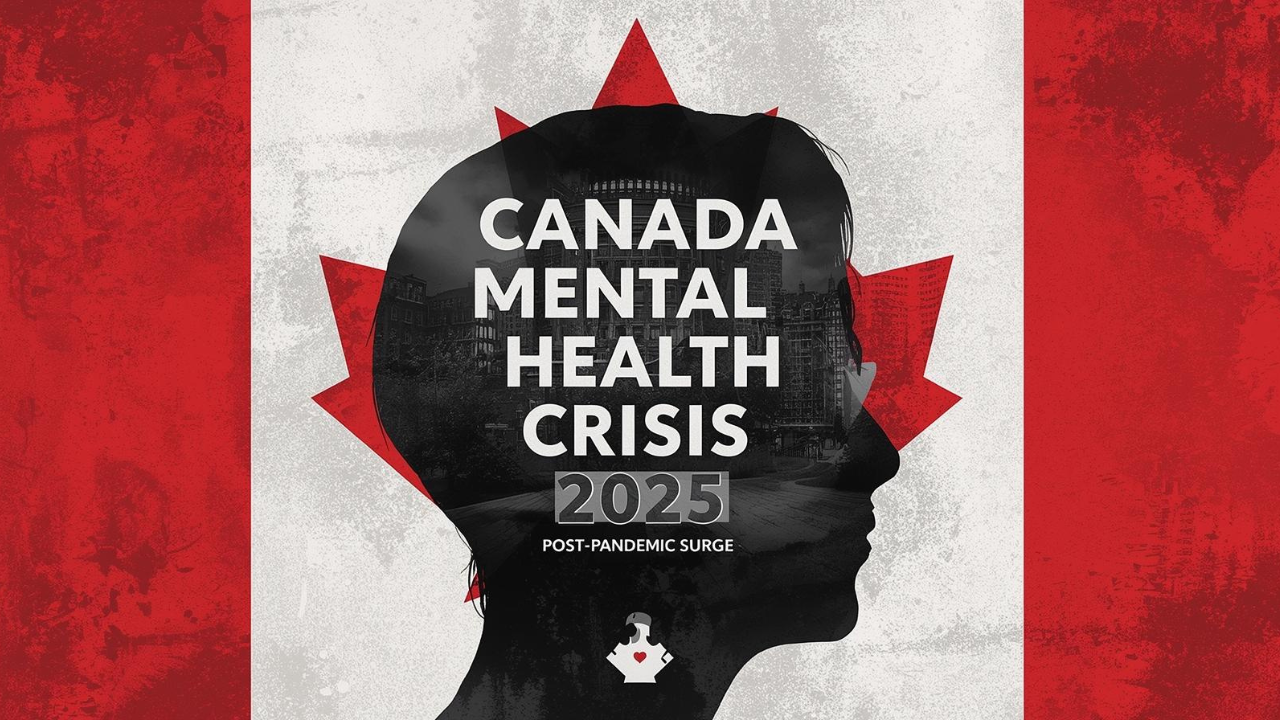
UK Chess Master Jailed 28 Months for Stalking Woma
Paul Keevil sentenced to 28 months for stalking, harassing, and blackmailing a woman in her 20s, hig

Canada is grappling with a severe mental health crisis in 2025, largely fueled by post-pandemic mental health challenges. Rising rates of youth mental health issues and women's mental health concerns, coupled with significant economic repercussions, underscore the urgent need for effective mental health policy and enhanced mental health services.
The COVID-19 pandemic left lasting scars on mental health worldwide. In Canada, the crisis has led to alarming increases in depression, anxiety, and stress-related disorders. According to the Canadian Mental Health Association (CMHA) report 2024, nearly 29% of Canadian adults report experiencing a mental health disorder since the pandemic, up from 20% in 2016. The surge is especially concerning among youth and women, reflecting significant social and economic consequences.
Even before COVID-19, Canada faced mental health challenges. Access to care was limited, particularly in rural areas, and stigma prevented many from seeking help. The pandemic amplified these issues, creating new stressors: social isolation, disrupted routines, financial instability, and uncertainty about the future. These factors contributed to the current Canada mental health crisis 2025.
Data shows that post-pandemic mental health issues are widespread. Depression, anxiety, and PTSD have surged, particularly among vulnerable populations. The Canadian Mental Health Association report 2024 confirms that current mental health statistics Canada 2025 reveal a significant increase in disorders compared to pre-pandemic years.
Youth are disproportionately affected. Remote learning, social isolation, and uncertainty about future employment have escalated stress and anxiety. According to a 2024 Statistics Canada survey:
Women have experienced a disproportionate impact due to caregiving pressures, job losses, and domestic responsibilities. Reports indicate that stress, anxiety, and depression among women are significantly higher post-pandemic. This emphasizes the need for targeted mental health services and policies addressing gender-specific concerns.
The economic consequences are staggering. Mental health issues cost Canada over $200 billion annually in lost productivity, healthcare, and social welfare support. Without intervention, the economic impact of mental health is projected to reach $2.5 trillion by 2041. Businesses are also affected, facing absenteeism and employee burnout.
Access remains a critical challenge. Rural and remote communities experience long wait times and limited service availability. Expanding mental health services is essential to mitigate the crisis. Telehealth and integrated youth services networks are being explored to bridge gaps.
Dr. Jennifer White, a clinical psychologist in Toronto, states: "The pandemic acted as a catalyst, amplifying pre-existing mental health issues. Immediate investment in services and policies is crucial to prevent long-term societal and economic damage."
The Canadian Mental Health Association emphasizes: "National mental health levels are three times worse than before COVID-19, yet funding remains insufficient. Comprehensive strategies are urgently needed."
Public concern is growing, with increased demand for services and mental health awareness. Media coverage reflects the severity, while globally, Canada’s trends mirror those in other post-pandemic countries. International organizations note that youth and women face the heaviest burden.
The surge in mental health disorders affects families, workplaces, and communities. High stress levels lead to absenteeism, lower productivity, and increased demand on healthcare systems.
Governments and organizations are responding. In 2024, Health Minister Marjorie Michel announced over $30 million to strengthen the Integrated Youth Services Network across Canada. However, experts stress the need for larger, sustained investment in mental health policy Canada 2025.
This article provides an overview based on available data, expert opinions, and reports such as the Canadian Mental Health Association report 2024. Trends are evolving, and ongoing research and policy changes may influence future outcomes.